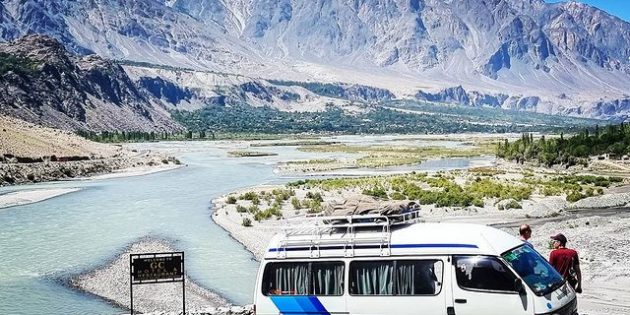|
Getting your Trinity Audio player ready...
|
Winter Anomalies: Thick fog has enveloped central, north-eastern, and much of the eastern regions of Pakistan, causing a drop in daytime temperatures. The sun had been absent for several days but managed to make brief appearances in the afternoon over the past few days, providing some relief.
The lack of sunlight and high humidity levels create a perception that the mercury has plunged to zero, even in the Indus plains, though this is not the case.
Fog and Smog Dynamics:This fog phenomenon is not confined to Pakistan, as a larger part of India is also grappling with similar conditions, a common issue for the neighboring countries.Interestingly, the fog follows over two months of smog, a consequence of man-made disasters that South Asia struggles to address for various reasons.
The underlying reason is straightforward: the absence of westerlies to bring rain to Pakistan and India. Iran and Afghanistan, across our western borders, have also experienced minimal precipitation this season.
Climate Challenges:While global warming or climate change has led to a notable decrease in regional rainfall, the situation is particularly severe this winter season. The absence of disruptive weather patterns over Pakistan and India has resulted in dense fog cover.
Snowfall Absence:When there are no clouds to bring rain, the region cannot receive snow, posing a threat as glaciers in the Himalayas, Karakorum, and Hindukush mountains are already diminishing rapidly due to rising temperatures and erratic rains/snowfall associated with global warming.
Tourism Downturn:In connection to this, Reuters reports that a lack of snowfall has led to empty ski resorts and holiday cancellations in the Indian Himalayas. Scientists link this “unusual” winter to the El Nino weather phenomenon.
Read Also: Arctic Chill Alert: Brace for Bitter Cold and Potential Snowfall in the UK
The dry spell in Kashmir has forced skiers to bypass the popular resort of Gulmarg, and hotels in the scenic region await fresh falls to attract tourists to the panoramic views of snow-capped peaks.
This winter’s conditions in northern India, marked by the absence of snowfall in the mountains and biting cold exacerbated by thick fog in the plains, have not been observed for about a decade, according to scientists.
The dearth of snowfall has led to Tourism Downturn and agriculture-focused economy of the region. Travel industry executives in neighboring states also report significant cancellations.
Winter snow and rain in northern India, including the Himalayas, are typically brought by a weather pattern known as western disturbances. However, these disturbances have been largely absent this season, attributed to changing wind patterns, rising temperatures due to the active El Nino weather phenomenon, and climate change.
The current weather conditions are considered highly unusual for this time of year, with Delhi experiencing lingering cold and excess moisture in the air but a noticeable absence of snow. It marks one of the most polluted and prolonged stretches of winter.


What i do not understood is in truth how you are not actually a lot more smartlyliked than you may be now You are very intelligent You realize therefore significantly in the case of this topic produced me individually imagine it from numerous numerous angles Its like men and women dont seem to be fascinated until it is one thing to do with Woman gaga Your own stuffs nice All the time care for it up